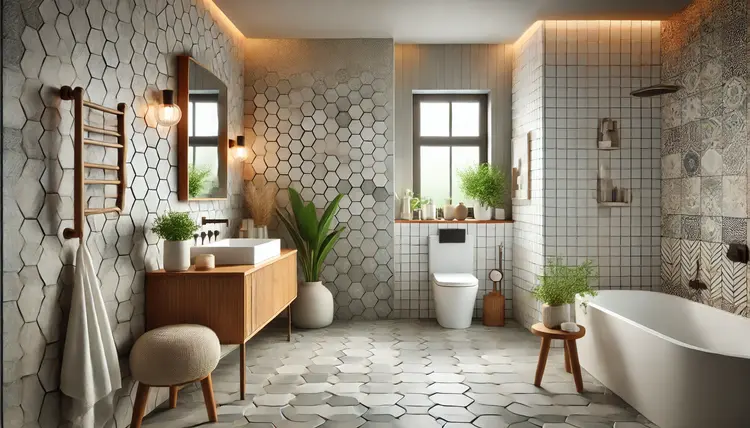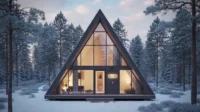Edging Designs for Gardens: Best & Functional Landscape Ideas
Published: 17 Apr 2025
1. Introduction to Garden Edging
The Importance of Garden Edging
Landscape design heavily relies on garden edging to achieve its objectives. Edge designs in a garden create defined boundaries to give structure through highlighting certain garden areas. Edging correctly serves to preserve border divisions between outdoor areas, which makes garden upkeep easier.
Factors to Consider When Choosing Edging Designs
You must assess four factors about garden edging design before you make your decision: the existing garden style and material endurance, as well as maintenance responsibility and price point. Your edging decision must both match the landscape and serve its functional purposes.
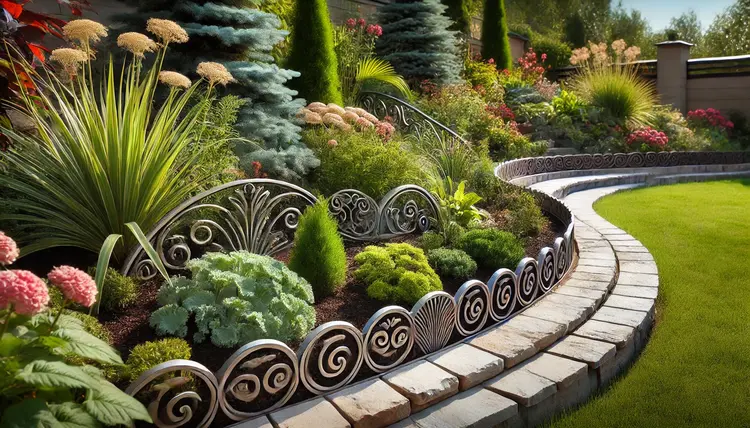
2. Traditional Edging Materials
Brick Edging
The traditional appearance which bricks possess makes them timeless as an edging material. Different decorative patterns such as herringbone and basket weave enable users to increase the visual appeal of their edging layouts. Bricks maintain their strength through all weather extremes because of their durability, so they are commonly used for garden edge creation.
Design Type | Material Used | Best For |
Concrete Edging | Concrete | Contemporary gardens, clean lines |
Plastic Edging | Plastic | Budget-friendly gardens |
Rubber Edging | Rubber | Flexible, eco-friendly designs |
Gravel Edging | Gravel | Low-maintenance gardens |
Stone Edging
Garden borders acquire their rustic organic character treatment from the use of natural stones. The selection of different sizes and forms enables people to design unique edging arrangements. Stone edging maintains its durability through time and perfectly matches the aesthetic quality of organic nature.
Wood Edging
The weather-resistant characteristics of wood make treated timber and logs suitable for garden edging because they give off warm natural aesthetics. The material works for numerous gardening designs because it allows custom modification for different visually appealing styles. Selecting wood that stands against decay is crucial to extend its lifetime.
3. Modern Edging Materials
Metal Edging
Durable metal edging components generally consist of aluminum or steel materials to deliver a modern and stylish design. The material has fantastic durability characteristics that enable users to form neat linear features to complement contemporary landscape designs.
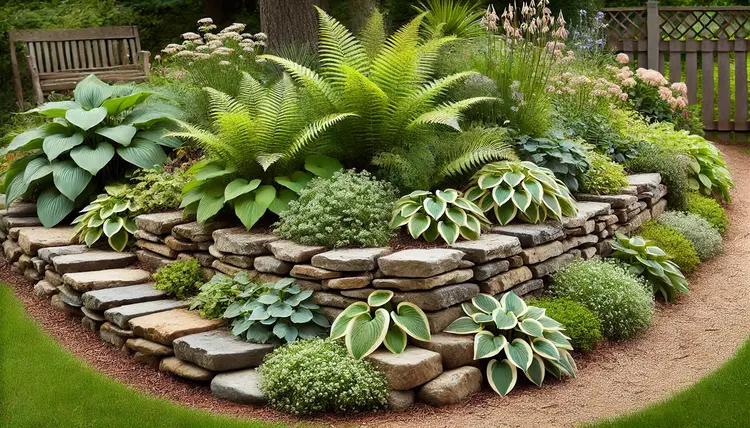
Plastic Edging
Ring-shaped plastic edging suits home gardeners because of its affordable nature along with its flexible installation capabilities. This material is straightforward to put in place and comes in multiple style options together with color variations. High-quality plastic edging proves to be less durable than stone and metal but still supplies a smart and defined visual presentation.
Concrete Edging
Concrete edges establish a modern appearance with its basic and uncluttered design. The material allows for various forms as well as stamping and coloring to mimic other materials. Concrete stands up well to time and needs very little care for upkeep.
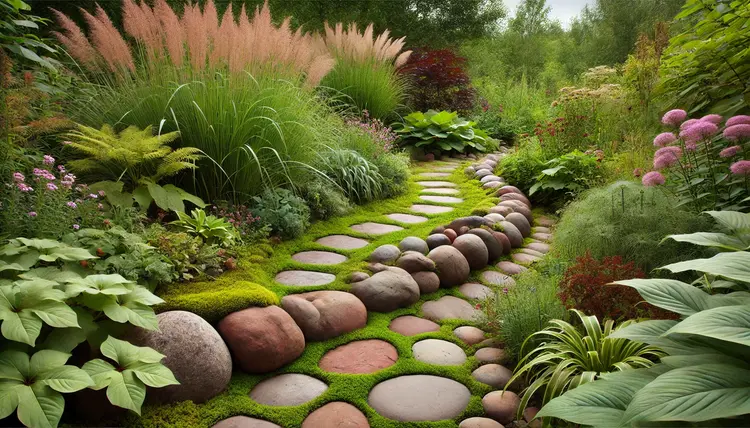
4. Natural Edging Options
Living Edges
Living plant edges develop a soft and natural segregation between areas. The combination of mondo grass along with lavender creates spatial definition through their low-growing habitations and brings both color and textural elements.
Mulch Edging
Wood chips or bark are informal edge materials that can be utilized as mulching substances. The material functions to hold moisture in soil while preventing weeds, delivering dual benefits of purpose and appearance.
5. Creative and DIY Edging Ideas
Recycled Materials
Old bottles and reclaimed bricks along with tiles form eco-friendly edging possibilities when recycled as design elements. The addition of edge materials adds visual appeal to the setting and minimizes discarded materials.
Log Edging
A rustic border results from installing logs or branches in an upright position. Such a self-built solution works well with natural garden settings while remaining affordable in cost.
Design Type | Material Used | Best For |
Brick Edging | Bricks or Pavers | Traditional gardens, formal styles |
Metal Edging | Steel or Aluminum | Modern, minimalist gardens |
Stone or Rock Edging | Natural Stones | Rustic, natural landscapes |
Wooden Edging | Timber or Bamboo | Cottage gardens, eco-friendly designs |
Terracotta Pipes
Placing terracotta pipes at garden bed horizontal distances produces an effective edge that also provides visual appeal to the garden. Log pipes enable gardeners to plant their herbs and small plants directly inside the edges.
6. Installation and Maintenance Tips
Proper Installation Techniques
Verify ground surface flatness while inspecting it for any presence of refuse prior to edging installation. Metal and plastic materials must be fastened tightly to avoid movement. Through correct installation methods, products become both more resilient and more attractive.
Maintenance Practices
You should routinely look for signs of damage and displacement on your edging system. Regular cleaning of debris and scheduled management of plant overgrowth will help you achieve a neat appearance. Certain materials demand occasional treatment procedures together with sealing procedures to maintain their preservation state.

7. Benefits of Garden Edging
Enhanced Aesthetics
Your garden needs edging methods for achieving clear organization along with characteristic boundaries which unify your gardening plan.
Weed and Grass Control
A well-installed edging serves as an effective boundary which stops grass and weeds from entering flower beds and simplifies the maintenance process.
Improved Drainage
Strategic placement of specific edging materials helps water flow management by stopping erosion while enhancing drainage conditions in your garden.
8. Conclusion
When designing a garden complete with edging, it is essential to choose the right design, as this will produce a stunning functional outdoor setting. Every style of garden siding requires a suitable material solution, which ranges between classic materials of brick and stone and contemporary materials of concrete and metal. The selection of garden edging relies on three key aspects, which are the garden’s appearance, how much upkeep it requires and your individual tastes.
FAQs
What is the most enduring substance for making garden edges?
Stone together with metal creates the most enduring choice since these materials provide lasting performance in various weather situations.
Is the installation of garden edging available as a do-it-yourself project?
Numerous edging solutions exist which can be handled as DIY projects. The installation process should follow manufacturer instructions to achieve desired results.
What depth is required for garden edge installation?
The proper depth installation for edging should be between 4 and 6 inches deep when it is used to create distinct garden areas while blocking grass from spreading between them.
Does metal edging show rust development during its long-term use?
Quality metal edging typically receives treatment to protect it from rust development. Metal edging withstands weather, but natural weathering creates a faded appearance that people consider attractive.
What procedures are required for proper maintenance of wooden garden edging?
Regularly applying sealant or wood preservative, together with rot-resistant wood selection, will help extend the edging lifespan.
Is the practice of employing living plants as garden edging feasible?
Plants that grow low to the ground can establish natural barriers that create both softness and beauty when used to outline gardens.

- Be Respectful
- Stay Relevant
- Stay Positive
- True Feedback
- Encourage Discussion
- Avoid Spamming
- No Fake News
- Don't Copy-Paste
- No Personal Attacks

- Be Respectful
- Stay Relevant
- Stay Positive
- True Feedback
- Encourage Discussion
- Avoid Spamming
- No Fake News
- Don't Copy-Paste
- No Personal Attacks
